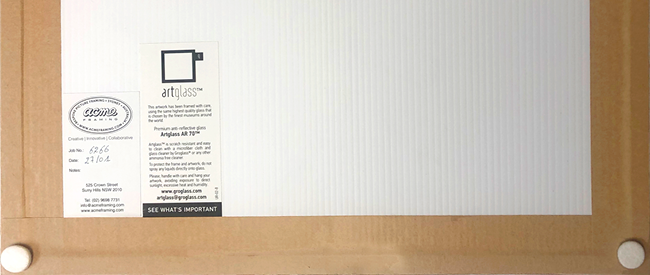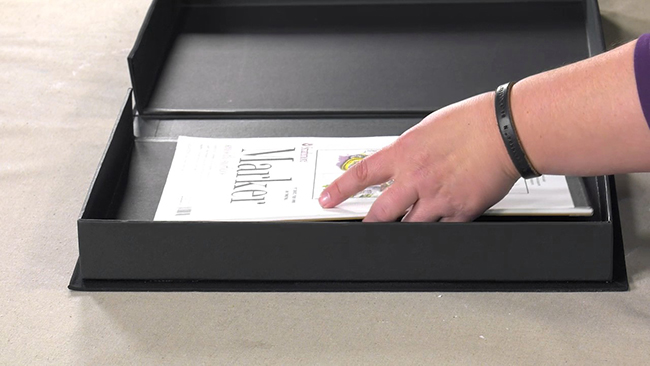Damp weather health-check for your art
With damper than usual conditions following the recent storm events, and water that may have entered your walls through leaking roofs, eaves and windows – we recommend checking your walls for damp areas that could affect work hung on them, and review the condition on any valuable artworks in your collection.
Here are a few quick tips for reviewing and safeguarding framed works on your walls, as well as unframed works you have stored away.
Framed photos and works on paper
- Backing boards – check for signs of mould and moisture on the back of your framed work. At Acme Framing we use 5mm polypropylene CorFlute for most of our work, it’s acid-free and highly stable, providing an excellent moisture barrier. MDF backings whilst very common, are more permeable to moisture, and the wood pulp they are made from, can over time, leach acid into the matts and artwork.
- Framing tape – provides a moisture barrier and locks out potential insect intruders. Check for loose tape and replace if needed, and inspect the framed work for any insects that may have entered through the loose tape.
- Bump-ons – these small, inexpensive cork, felt or silicon disks attach to the bottom corners of your frames, and create a gap for air to circulate between your artwork and the wall it is hanging on. They can be purchased from most hardware stores.

Painting on Canvas (on stretcher frames):
- Canvases loosen when exposed to moisture and tightens when the air dries out. Excessive expansion and contraction will cause the stretched canvas to slacken and eventually sag, requiring either frame-adjustment (‘keying out’) or re-stretching.
- Assess the location of the work and avoid placing artworks near heaters, fireplaces, and direct sunlight. Excessive variations in temperature and humidity associated with such locations, can weaken the bond between the layers of paint, varnish, gesso and canvas, eventually leading to cracks and delamination (peeling/flaking).
Artwork stored in tubes and folders
- Avoid storing work in cardboard tubes! Cardboard breaks down over time, leaching damaging acid into your artwork. Check artwork in folders is buffered between sheets of acid free tissue or cardboard.
- Instead of carboard tubes – store your artworks flat, inside acid-free folders, that you can make with polypropylene CorFlute sheeting (available from hardware stores), bound in the centre with tape on both sides. Store work inside the folders between sheets of acid-free tissue paper that can be purchased from your local art supply shop.
- For larger collections of works on paper or more valuable works – you may want to invest in a solander box. These are acid-free print boxes with hinged front panels that can be purchased from art conservation suppliers. These boxes allow many works on paper to be stacked loosely inside, between sheets of acid-free tissue/paper or rag mat cardboard. They protect your work from impacts, moisture, and acid leaching from adjacent materials.

